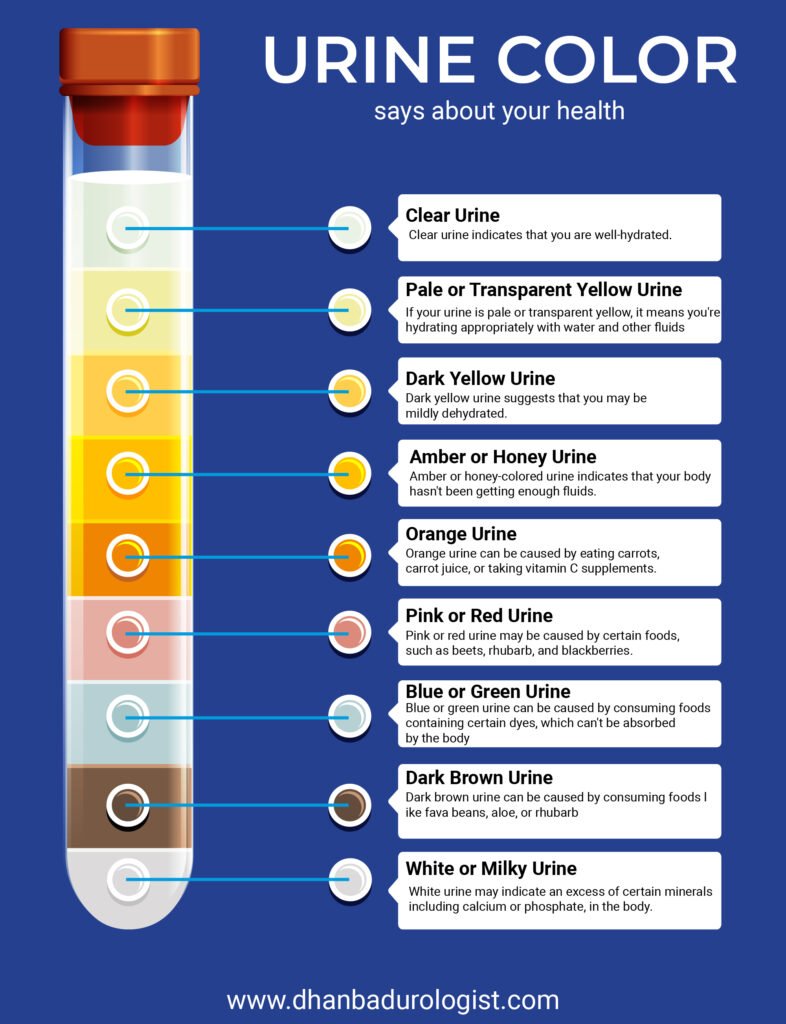Urine color and smell can indicate a lot about your overall health and hydration level. Normal urine color is pale yellow, but deviations in color can indicate various health issues such as dehydration, liver problems, or even urinary tract infections. The smell of urine can also provide insight into your health, as a strong, foul odor can indicate infection or an underlying medical condition. By paying attention to the color and smell of your urine, you can better understand your body and address potential health concerns early on. In this blog, we’ll explore the different colors and smells of urine, what they could mean, and when to seek medical attention.
What Can Cause Smelly Urine?
Smelly urine can be caused by a variety of factors, including dehydration, dietary choices, medication, and underlying medical conditions. Dehydration can cause urine to become concentrated, resulting in a strong odor. Certain foods and drinks, such as asparagus, coffee, and alcohol, can also cause urine to have a strong smell. Medications like antibiotics and B vitamins can also lead to changes in urine odor. In some cases, smelly urine can be a sign of an underlying medical condition, such as a urinary tract infection, liver disease, or diabetes. It’s important to talk to a healthcare professional if you experience persistent changes in urine odor or if you have other concerning symptoms.
Other possible causes of smelly urine include dehydration, consuming certain foods or drinks (such as asparagus, coffee, or alcohol), and certain medications (such as antibiotics or vitamins). In some cases, smelly urine may be a sign of an underlying medical condition such as a urinary tract infection, liver disease, or diabetes. It’s important to pay attention to any changes in urine odor, as it can sometimes indicate a more serious issue that requires medical attention. If you’re concerned about the smell of your urine, it’s a good idea to talk to your doctor to rule out any underlying health conditions and discuss any necessary treatment options.
What Causes Urine to Change Colors?
The color of urine is often an indicator of a person’s health. It can vary based on hydration level, diet, medication, and underlying health conditions. The color of urine can range from pale yellow to dark amber, and any variation from the usual color can be a sign of an underlying problem. Dehydration is one of the most common reasons for urine to become more concentrated and darker in color. When a person doesn’t drink enough fluids, the body tries to conserve water by producing less urine, which can result in darker, more concentrated urine. Similarly, consuming too many vitamins or supplements can cause urine to become more yellow or orange in color.
Certain foods, such as beets, berries, and rhubarb, can cause urine to turn pink or red. While this is usually harmless, it can also be a sign of a more serious underlying condition such as kidney disease or a urinary tract infection. Urine can also turn brown or tea-colored due to liver problems, such as hepatitis or cirrhosis. Additionally, medications such as antimalarial drugs and laxatives can cause urine to turn brown. Green urine can be caused by a rare genetic condition called blue diaper syndrome, while blue urine can be a side effect of certain medications or due to a bacterial infection. If urine color changes persist or are accompanied by other symptoms, such as pain or discomfort during urination, it’s important to seek medical attention to rule out any underlying health conditions.
Urine Color and its Indications

- Clear urine: Clear urine indicates that you are well-hydrated. It can be a sign of overhydration, which can lead to an electrolyte imbalance in your blood. No medication is needed, but it’s important to ensure that you’re not drinking too much water.
- Pale or Transparent Yellow Urine: If your urine is pale or transparent yellow, it means you’re hydrating appropriately with water and other fluids. No medication is needed.
- Dark Yellow Urine: Dark yellow urine suggests that you may be mildly dehydrated. Drinking water when you’re thirsty can help avoid further dehydration. No medication is needed.
- Amber or Honey Urine: Amber or honey-colored urine indicates that your body hasn’t been getting enough fluids. Drink water to avoid dehydration. No medication is needed.
- Orange Urine: Orange urine can be caused by eating carrots, carrot juice, or taking vitamin C supplements. It can also indicate a potential liver problem or dehydration. Certain medications such as laxatives, chemotherapy medication, sulfasalazine (Azulfidine), rifampin (Rifadin), warfarin (Coumadin), and phenazopyridine (Pyridium) can turn urine orange.
- Pink or Red Urine: Pink or red urine may be caused by certain foods, such as beets, rhubarb, and blackberries. Medications such as rifampin, chlorpromazine (Thorazine), thioridazine (Mellaril), phenazopyridine (Pyridium), and senna-containing laxatives can also give urine a reddish-orange tint. Blood in urine caused by urinary tract infections, enlarged prostate, tumors, cysts, kidney stones, or lead or mercury poisoning can also cause urine to appear pink or red.
- Blue or Green Urine: Blue or green urine can be caused by consuming foods containing certain dyes, which can’t be absorbed by the body. Medications such as amitriptyline (Elavil), indomethacin (Indocin), cimetidine (Tagamet), promethazine (Phenergan), and propofol (Diprivan) can also cause blue or green urine. Blue diaper syndrome or familial benign hypercalcemia is a rare disorder that can cause blue urine. Green urine can be caused by pseudomonas bacteria, which causes urinary tract infections.
- Dark Brown Urine: Dark brown urine can be caused by consuming foods like fava beans, aloe, or rhubarb. It can also indicate liver and kidney diseases, urinary tract infections, or injury from intense exercise. Certain medications such as malaria medicines, antibiotics, laxatives, and muscle relaxants can also cause dark urine.
- White or Milky Urine: White urine may indicate an excess of certain minerals, including calcium or phosphate, in the body. It can also be a sign of a urinary tract infection. No medication is needed, but it’s important to get checked by a doctor to determine the cause of the white urine.
Conclusion
In conclusion, changes in urine color and odor can be an indication of various health conditions. It is important to pay attention to these changes and consult a doctor if necessary. Dr. Saket Narnoli, a urologist and men’s health specialist emphasizes the importance of regular check-ups and encourages patients to seek medical attention if they notice any abnormalities in their urine. With his expertise, patients can receive proper diagnosis and treatment for any underlying health issues related to changes in urine color and odor. Remember to stay hydrated, maintain a healthy diet, and seek medical attention when necessary. Your urinary health is an important aspect of your overall well-being.






